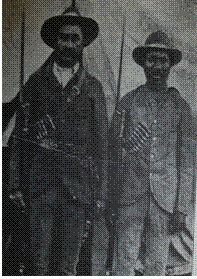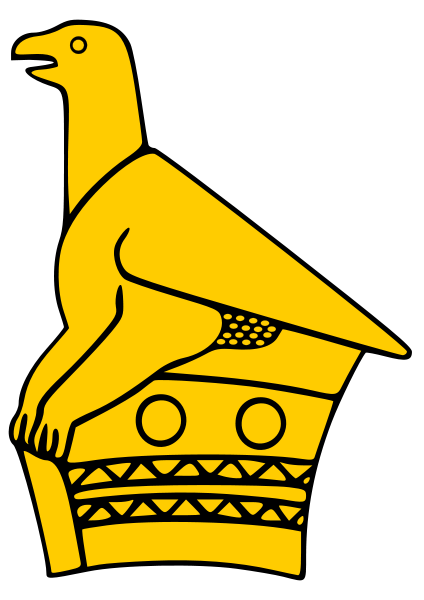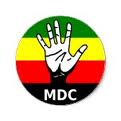Pioneer Days
Let's hear about the events of May.
Earl Grey arrived in the Bulawayo laager on May 2 and took over from Duncan as the senior Company official and was immediately beset by problems, large and small. One that afforded him great amusement was a plea from the town's frustrated park manager who pestered him to end the delay in getting 150 rose bushes from the Cape, arguing the expense would be offset by a demand for wreaths once the troops went on the offensive! Sir Richard Martin, representing the Imperial authorities, arrived soon after and by the end of the month Colonel Plumer's Matabeleland Relief Force arrived at the stout laager. These men and their soldiers were of great assurance to Bulawayo's citizens; they showed the town had not been abandoned by the outside world and that the war they were fighting would now be won (after all, once the British became fully involved in a war in Africa, they almost never backed out). Other than Napier's departure to meet up with the Salisbury contingent, the most serious event of the month was the attack on the Afrikaner laager, located behind the Memorial Hospital. Plumer decided to go on the offensive soon after this and in a daring experiment (for the times) led his men on a night march past the area of Government House and Trenance, hoping to take the Matabele by surprise. As the Rhodesia Weekly Review wryly commented, “Something almost akin to pity rose in everyone's heart when they thought of the drowsy natives being attacked by 700 stalwart men”. His men were split into two columns and rather than catching the Matabele off guard, Plumer's men were attacked in the dark and only avoided defeat when the column merged. The fight continued the next day before the Matabele withdrew in some confusion.
A final Bulawayo gamble.
The last battle on the Umgusa River (at least until 1980!) took place on June 6 when Bulawayo's citizens took matters into their own hands one last time. Upon hearing that a large force composed of at least 1200 “carefully selected picked men, from eight different impis, who had been chosen to take part in this venture [attacking Bulawayo], the success of which had been guaranteed by the Mlimo” (BSAC 1898: 11), Colonel Jack Spreckely rode off to do battle with 200 men (including Selous, van Niekerk and Grey), later joined by 50 men under Baden-Powell. For the first and only time during the war, the whites were able to use traditional cavalry tactics and, after crossing the River charged the Matabele at full tilt. “They did not wait, but one and all they turned to fly, dodging in among the bushes... The Matabele as they ran kept stopping behind bushes to fire. Now and then they tried to rally but whenever a clump of them began to form or tried to stand, we went at them... and sent them flying” (Baden-Powell 1897: 56-57). More than 200 Matabele dead were accounted for in return for four wounded whites, one of whom later died. The official report (BSAC 1898: 11) wrongly claimed “After this engagement the Matabele could never be persuaded to fight until they were, by the pressure of our troops, forced to do so”; if this was so, why the war in Matopos? The battle was an important psychological boost for the whites and did have the effect of apparently driving a wedge between the main commanders – Mkwati and Umlugulu, the latter heading for the Matobo Hills while his compatriot went north to his sacred shrine.
Was June pivotal?

Two members of the Cape Boys
Both sides needed a morale boost in the month of Jupiter's wife and both got it. The Matabele were heartened by the news that the Shona to the north had at last broken out in revolt against the whites, something that will be described in a later briefing. Colonial authorities received the astonishing and puzzling news that the “Mlimo,” held by many to be the architect and leader of the revolt, was dead, killed by the American solider Frederick Burnham. The death of the “high priest” was widely expected to have a disastrous effect on the Matabele conduct of the war; and thus it was with some surprise that the guerilla war continued and actually intensified. The full story has already been recounted in a prior briefing but here it is appropriate to note that the whites completely misunderstood the nature and practice of traditional Matabele religion which led to the creation of the myth of the centralised power and influence of the M'limo. They were desperate to find a central leader for the War and focus shifted to blaming the power of the M'limo without actually attempting to understand the nature of the traditional religion; a common analogy was to compare the M'limo and the Mahdi in the Sudan. In popular Muslim belief, the Mahdi is a spiritual leader who will rule before the end of the world and restore religion and justice to their purest state. Muhammad Ahmad of Dongola in Sudan led the revolt against the Egyptian regime and captured Khartoum in the 1880s.
Anything important happen.
June seems to have been a month of consolidation and skirmishing for both sides. Spreckley led a strong commando to re-establish white authority in the Shiloh and Inyati areas, building and garrisoning a fort in both places. The fort at Shiloh was a circular earthwork wall, 1.2m high and 13m across surrounded by a ditch. Inyati's defence was small and by September only seven men of the 7th Hussars were living there, in a “small open fort, open, flat, blazing sun and flies innumerable”; they had removed corrugated iron from the roofs of the nearby mission buildings causing much complaint. Welsh Harp fort, located near the battleground of June 6 was built two weeks later and served more as an outpost for gathering information. Another redoubt was created on the 1893 Bembesi battlefield under the command of Captain L.C. Geyser, who was at the time, under suspicion of selling stolen grain in Bulawayo (Plumer later confirmed this and put a stop to it). Geyser obviously inspired his men since when he was eventually replaced, his men resigned in protest in large numbers or refused to follow orders; most were court-martialled, fined and discharged. In the midst of all this construction work, Carrington's attention shifted to the two strongholds of Ntaba-zika Mambo and the Matobo Hills. Rather than split his forces, the Commander in Chief decided to tackle one at a time.
Sourced from the Zanj Financial Network 'Zfn', Harare, Zimbabwe, email briefing dated ? 2011


 South Devon Sound Radio
South Devon Sound Radio Museum of hp Calculators
Museum of hp Calculators Apollo Flight Journal
Apollo Flight Journal Apollo Lunar Surface Journal
Apollo Lunar Surface Journal Cloudy Nights Classic Telescopes
Cloudy Nights Classic Telescopes The Savanna - Saffer Shops in London
The Savanna - Saffer Shops in London Linux Mint
Linux Mint Movement for Democratic Change
Movement for Democratic Change